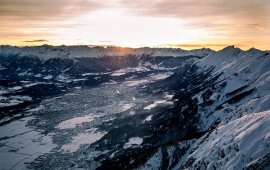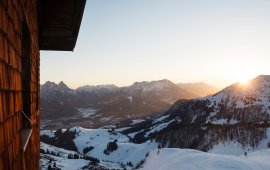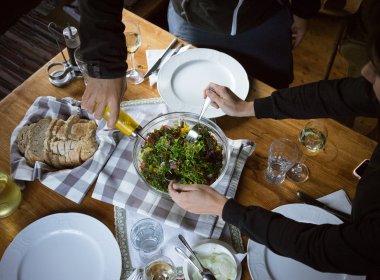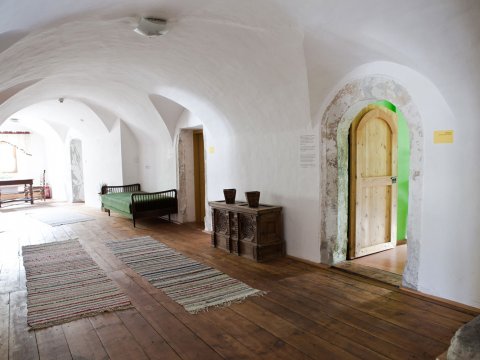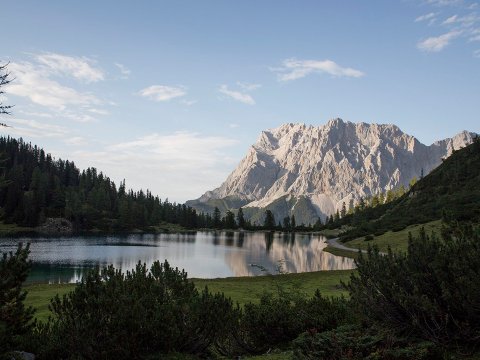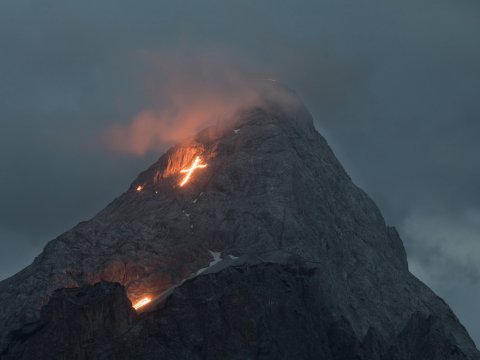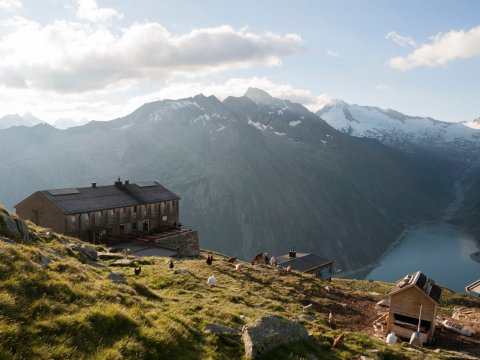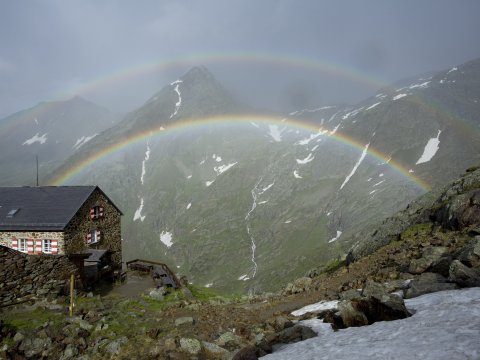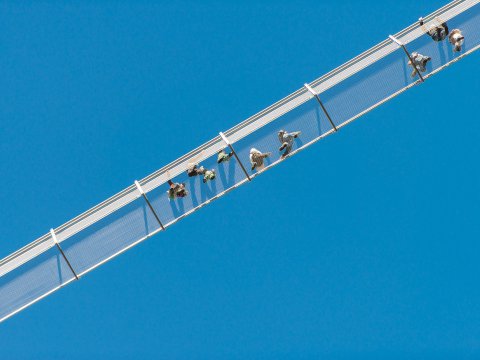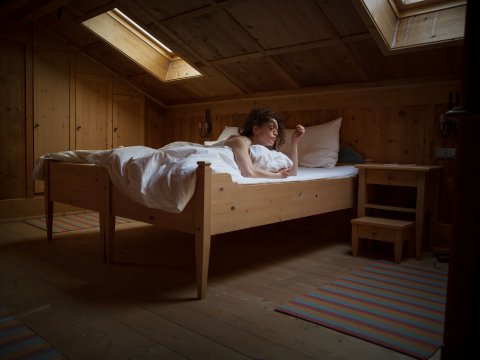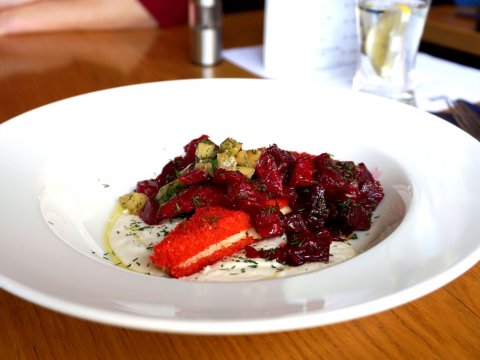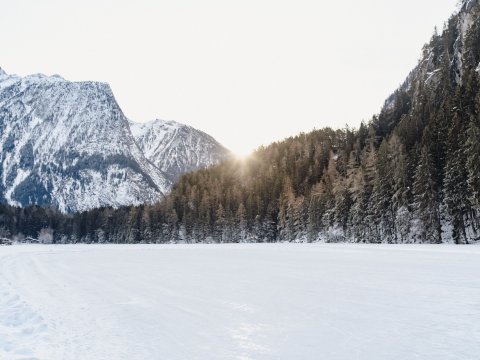Embracing the Cold

Our reporter has spent her life avoiding the cold. While others head out into the mountains, she prefers to cuddle up at home with a good book and a hot water bottle. Now the time has finally come to try something new and leave that famous comfort zone behind. But can you really learn to love to cold?
When I think back to my childhood, the warmest place in our home was always my bedroom. I remember how my father would come up at night and tuck me in tight to keep out the cold. He had grown up on a farm in the mountains where in the winter ice would form on both the inside and outside of the windows. Decades later, with a family of his own, he was determined we should not suffer the cold he endured in his own childhood.
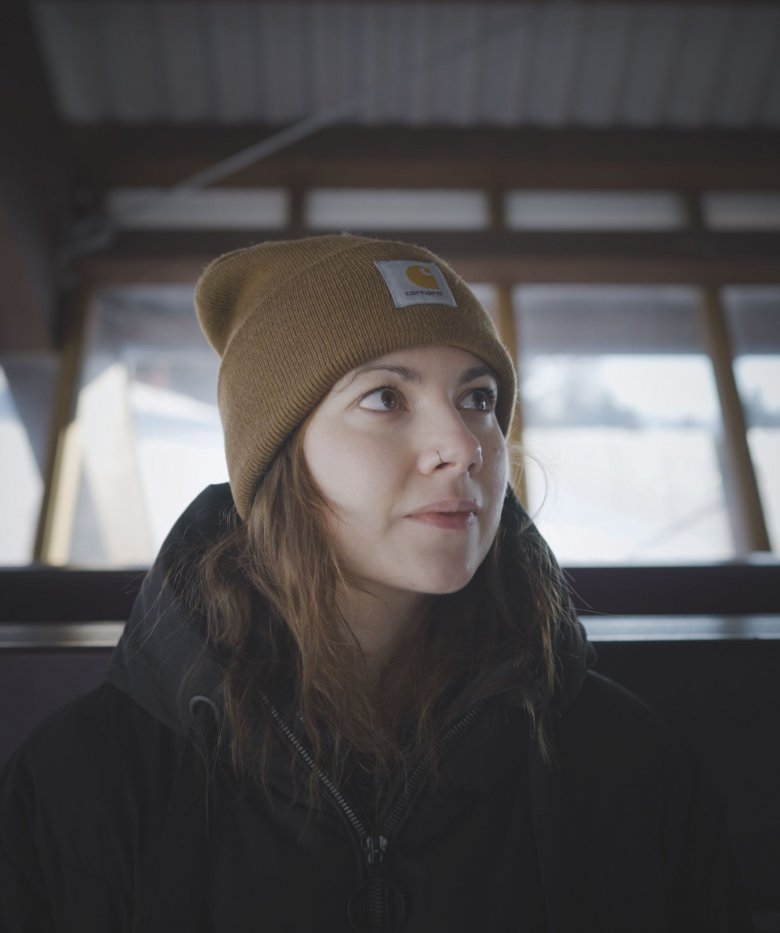
Even today I am still not the best at dealing with the cold. I can't fall asleep at night if my toes aren't totally toasty warm. When winter arrives, I only leave my flat when I really have to. "There's no such thing as bad weather, only the wrong clothing" is a well-known saying. Yeah, right! The funny thing is that I actually love the snow – particularly when it's on Instagram. In real life I tend to wait until the first signs of spring to go out and see the snow for myself, but by that time it has already started to melt and lost all of its Insta-friendly glitter.
Time, I decide, to finally do something about my phobia of all things cold. I prepare for my up-coming challenge by slowly turning down the heating in my flat. Not exactly extreme outdoor survival, I know, but I guess you have to start somewhere.
Day 1: Ten Hours in the Cold? Really?
It's just after 8 o'clock in the morning. I am standing at the mid-way station of the cable car transporting skiers and snowboarders up to the ski slopes above Lienz in East Tirol. The temperature is -2 degrees Celsius. I stomp around on the spot trying to stay warm as I wait for the man who is going to introduce me to the world of the cold. I am new to winter sports. In fact, if I am honest, I have never quite understood why anyone would want to spend their hard-earned money on sliding around in the cold.
My guide for the day, Gerhard Kofler, arrives. Unlike me he is an old hand when it comes to living and working in the snow. This, he tells me, is his 36th winter working in the resort. His job? Lift assistant, technician and what he calls "Feel Good Manager" – a handyman capable of spreading good vibes in the resort no matter how low the temperature falls. If anyone can show me the secret of embracing the cold, it's Gerhard.
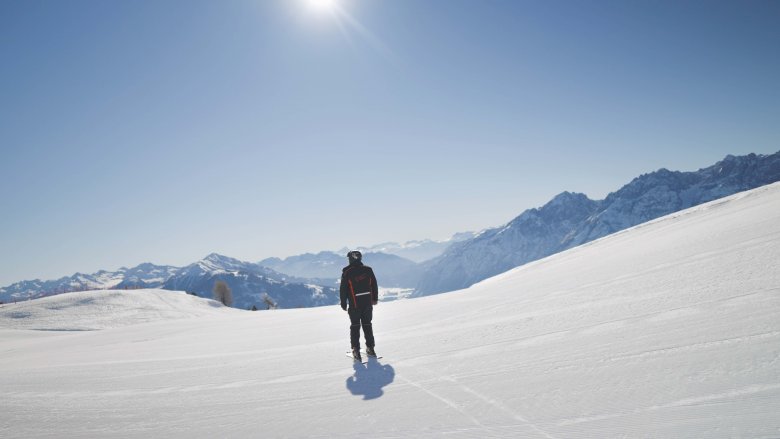
He is already clipped into his skis and ready to head out for a piste check before the first skiers arrive at 9 o'clock. I clip in myself and follow him down to a nearby draglift. He skis without poles, keeping his hands free to deal with ... well, who knows? Conditions are perfect: mild temperatures, not too much wind. A far cry, Gerhard tells me, from the winter of 2019. Back then the season was one of heavy snow, thick fog and fierce storms. Over the course of the winter they had 5.70 metres of fresh snow. "That was one of the toughest winters I can remember," he says. "We spent the whole day shovelling snow." Sounds like hard – and cold – work to me, but Gerhard is quick to point out that it is not the snowy days that are the worst but instead the clear nights with a cold wind, when temperatures can easily fall to below minus 25 degrees.
Minus 25?! How on earth do you stay warm in those kinds of conditions? Gerhard shrugs his shoulders. "Lots of layers, I guess," he says with a wry smile. If I had been expecting a revolutionary idea on combatting the cold, I guess I was going to be disappointed. Layering-up against the cold winter is something people have been doing in the Alps for thousands of years. Even Ötzi the Ice Man, the 5,300-year-old mummy found in the mountains in 1991, was wearing several layers on his ill-fated final journey: a leather loincloth, an animal-skin jacket and a kind of raincoat made of grass. Nice idea, I find myself thinking, but it didn't really help him, did it? Still, the principle of lots of thin layers one on top of the other instead of one thick jacket has survived until today. The only difference is that now grass and animal skin have been replaced by fleece and softshell. Gerhard explains that when it comes to layering up, it is important that you have space in between between the layers so air can circulate and form a natural barrier against the cold.
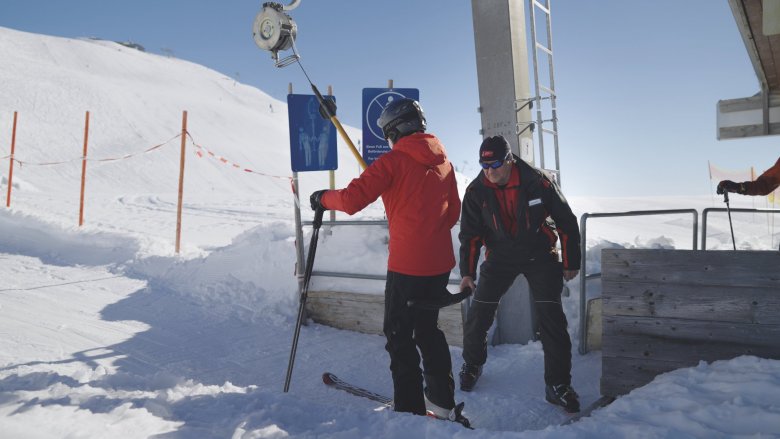
The sun is out, but I'm still feeling the cold. "It's the wind," Gerhard says. "It makes everything feel colder." Another factor not to be underestimated, he adds, is humidity. "Minus 15 degrees with dry air is not as bad as minus 5 degrees with damp air."
We are at the top of the Lackenboden draglift at 2,075 metres altitude. The wind is blowing. I'm cold. I turn up my collar and find myself wishing that I had a button I could push to make all my clothes a bit longer and thicker. Gerhard, on the other hand, doesn't seem the slightest bit bothered by the freezing temperatures. His secret? "I always wear woollen socks knitted for me by my grandmother," he says with a smile. Warm feet, he goes on to explain, are key to a warm body. If things get very cold you can always wiggle your toes a bit to get the blood flowing.
What about the odd shot or two of schnapps to chase away the cold? "That may have been the case many years ago," says Gerhard, "but these days it is an absolute no-go." As well as the obvious fact that alcohol is strictly banned during work hours, he tells me that drinking actually opens the pores and makes you feel colder in the long run.
As the day draws to a close, Gerhard gives me one final piece of advice: "It's about the details." I notice, for example, that he has an extra layer of felt sewn into his hat to keep out the cold wind. I could do with one of those, I tell myself. Finally back home, I lie down on my warm couch and fall fast asleep. The right clothes, it seems, is an important part of staying warm – but it is by no means enough to truly embrace the cold. The time had come for me to leave my comfort zone.
Day 2: Ice, Ice Baby
It's 6 o'clock in the morning. I am standing on the frozen Tristacher See lake. The temperature? Minus 7 degrees Celsius. I have been awake for a while, but I still can't quite belivee my eyes when Josef Köberl appears in front of me wearing nothing but a pair of swimming trunks. "You can't be serious," I say. "Sure," he replies. "I don't want to be too warm when we go into the water."

Ice swimming is enjoying a huge boom right now. My Instagram is full of influencers chilling out (quite literally) in frozen lakes. Joining me for the day is Josef. He holds the Austrian record for cold water submersion and once spent 2.5 hours in a bath full of ice cubes. Some of favourite spots for swimming include the lake on the Hintertux Glacier at 3,000 metres. Over the years he has helped introduce more than 3,600 people to the sport of ice swimming. Now it's my turn. I can't wait.
A little bleary eyed, I follow him over to the wooden hut housing the boats which visitors can hire when the lake is open in summer. It is the only spot on the lake which is not covered in thick ice. Josef takes a metal ladder and breaks up the thin layer of ice which has formed on the water overnight. It seems like he was serious about this swimming thing.
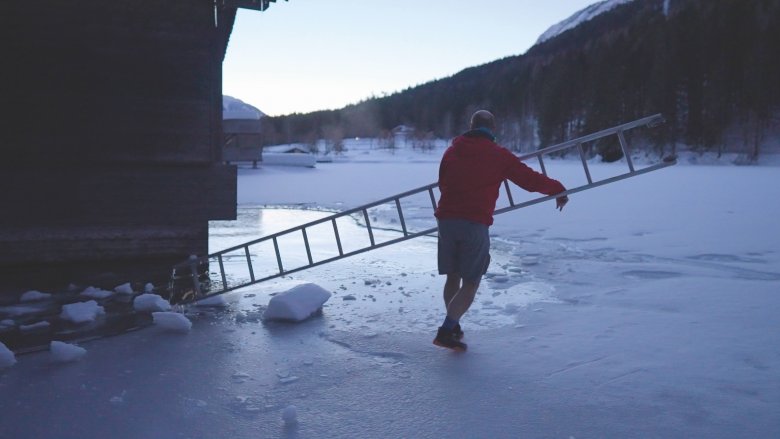
Having grown up on a mountain farm in Styria, Josef has been used to the cold since he was a child. In 2011 he took part in a swimming marathon held in the Hallstätter See lake near Salzburg. The event was exactly his kind of thing – and he hasn't looked back since. In 2015 he swam across the English Channel in 14 hours. That's some serious stamina. We prepare for our own little adventure by laying out our towels on the ice. Wearing nothing but a pair of trunks, Josef hops into the water as if it's nothing. I, on the other hand, am still trying to get my head around swimming in a lake full of ice. My strategy, I decide, is to get in fast, swim around a bit, then get the hell out of there. Josef doesn't approve. "That's not good for the body," he tells me. Great.
Still, if anyone knows, I guess it's Josef. He tells me the first step to being a cold-water swimmer is learning to accept the pain. The skin has to adapt to the temperature, he adds, so take deep breaths to signal to the brain that everything is okay. Panicking, it seems, is the worst thing you can do. The body stiffens up and you can't move – exactly what happens when people fall through the ice, Josef tells me. I have listened closely to Josef's advice. Now let's see if I can put it into practice.
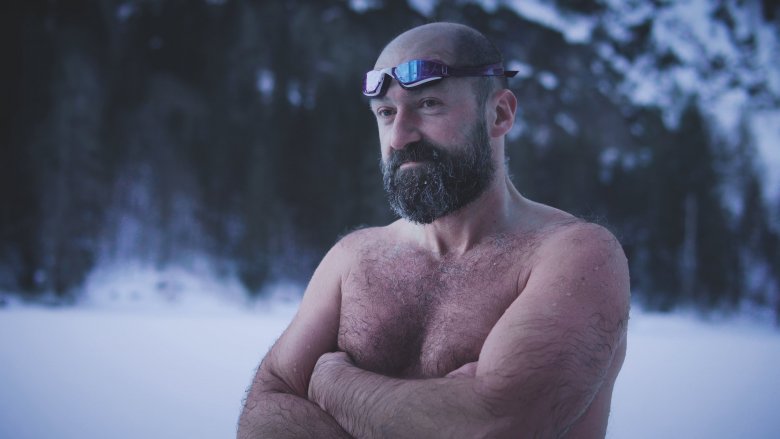
The water is nipping at my ankles. "How do you feel?" Josef's voice is as calm and warm as it was when he was out of the water. I give a slight nod of approval and take another step down the ladder. My thighs are hurting. It's not so much a burning sensation on the skin but more a huge feeling of pressure from all sides. My breathing quickens. I begin to panic. "Go back up a step and control your breathing," says Josef. I follow his advice and move back up a rung. After a few moments I have managed to bring my breathing under control again. Next try. Ankles, thighs, stomach. Slowly I immerse my body bit by bit in the freezing water. "Stay calm. You're fine," says Josef. Deep breaths. One, two, three. I'm finally in over my shoulders! I even manage a few frantic strokes in the icy water before grabbing back onto the ladder. My skin sticks to the freezing metal. Everything hurts. My idea was to embrace the cold, but now the cold is giving me a real kicking. After less than five minutes I am back out of the water and standing on my towel. Lost in my thoughts, I almost forget to put my clothes on. I slowly start to warm up again – and that's when the shivering sets in. I am shaking so much that I have trouble getting dressed. In the end, Josef has to help me pull on my shoes. As I desperately try to put on every item of clothing in sight, Josef somehow stays in his swimming trunks and "shivers himself warm" as he puts it.
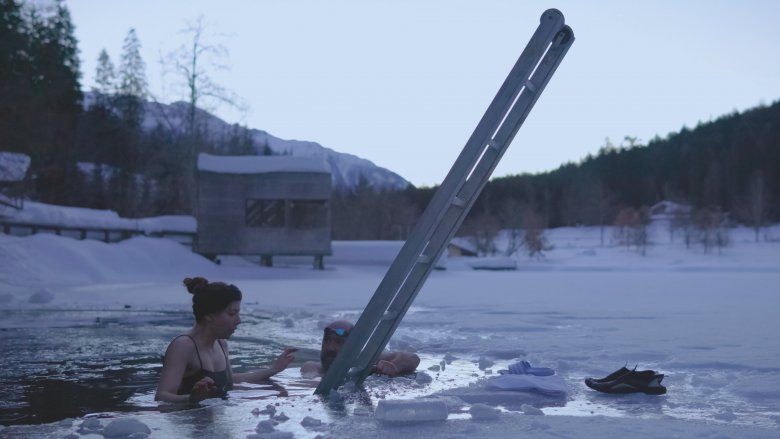
Ice crystals have formed on his beard. Isn't he cold? Doesn't he feel pain? "Sure, of course I do," he smiles. "I just accept that they are part of it." If things get really tough, he adds, he tries to think of nice things to distract himself. Sounds easy, but I'm sure it isn't. It takes many years of training to develop a mindset as tough as Josef's. After what seems like an eternity I am back to what you could call normal temperature. I am proud of myself – proud that I was able to overcome my fears, my doubts and, of course, the pain. When panic struck, I was strong enough mentally to bring myself back under control. I didn't need anyone to tuck me up. It was all down to me.
Day 3: Sleeping in the Snow
I am lying in a giant hole in the snow. My body is tucked up inside a thick sleeping bag. Pulled down over my eyes is a woolly hat. The only part of my body exposed to the elements is my nose. Next to me lies Magdalena. She has kindly agreed to take the side which is closer to the tent door so I get the "warmer" bit. Tired from a day of hard physical labour, I lie with a mixture of exhaustion and pride in the shelter we have built with our own hands protect ourselves from the elements.
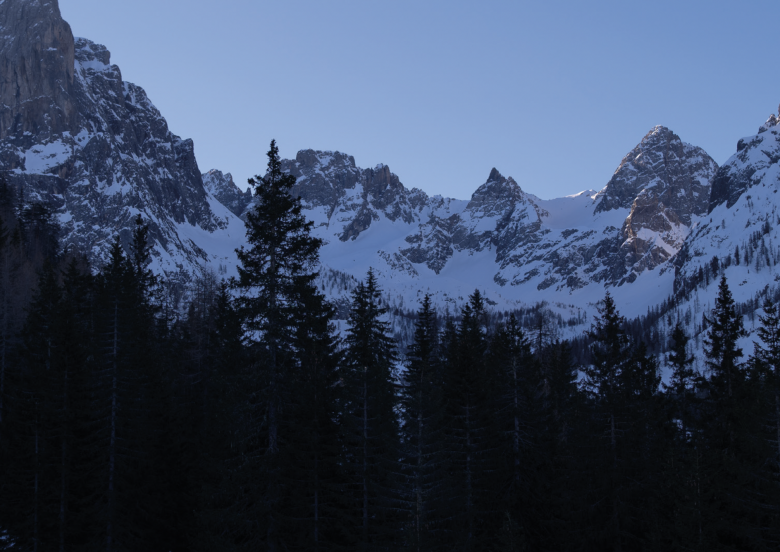
So how did we get here? Rewind a few hours to the afternoon and I met up with mountain guide Magdalena Habernig near the Dolomitenhütte hut, at around 1,600 metres above sea level. The sun was out and things weren't too cold. With temperatures above freezing, I was hoping for a relatively comfortable night. Magdalena, who also happens to be a meteorologist, was quick to cool my expectations. "The less cloud cover there is, the colder it gets at night. I reckon it could fall to at least minus 10 tonight," she says. Clouds, she explains, are like a natural blanket keeping the Earth warm. I turn my eyes to the skies. Not a single cloud. My ice-swimming experience may have been painful, but at least it was short. Whatever is coming my way tonight, it's going to last for hours.

The first step is building the snow shelter. For guides such as Magdalena this is part of their basic training. In emergencies a snow shelter can mean the difference between life and death. We find a good area of ground next to the forest, sheltered from the wind and more or less flat. We stomp on the snow for a bit to make an area large enough to lie down on. It is then time to put our backpacks next to each other, spread out our sleeping bags and shovel snow on top. As we heap the snow, we also pat it down to form a hard crust that will protect us at night. I notice how Magdalena is taking the slow-and-steady approach. It is important, she explains, that we don't start sweating. Once you stop shovelling, the sweat turns cold and saps the heat from your body.
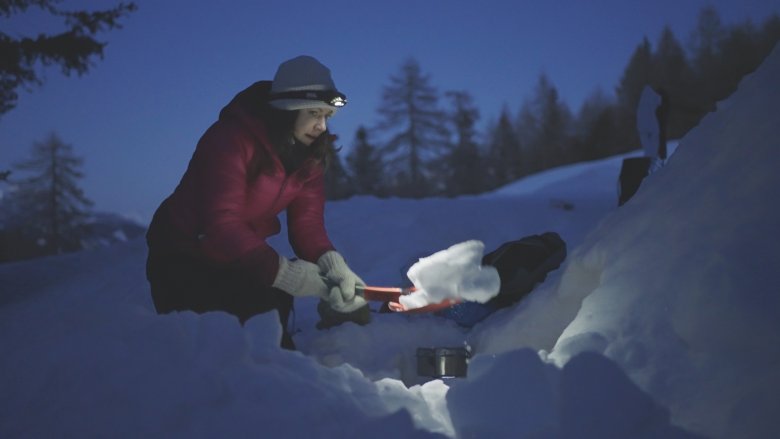
Our bivouac, as it is known in mountaineering jargon, is a rough and ready version of an igloo. The rucksacks are used to form the hollow bit where we will sleep tonight. Once enough snow has been piled on top, we pull out the our backpacks and voilà.
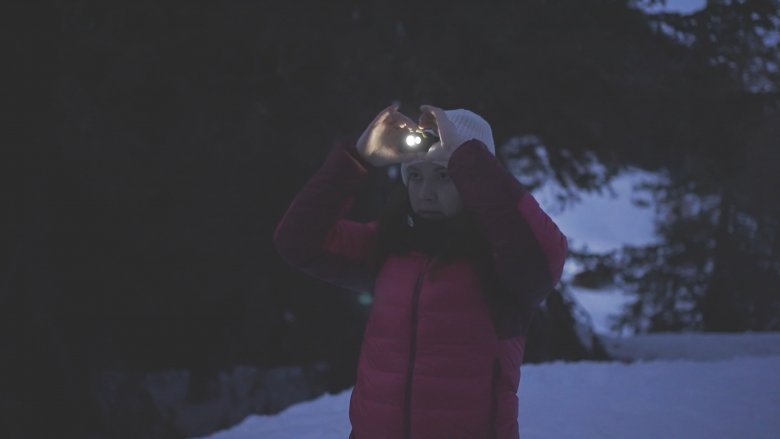
After around three hours of work we are finally done. Magdalena fires up the camping stove and sets about preparing our dinner of pasta with pesto. The sun slowly sets behind the mountains. It is a dining experience unlike any other.
The entrance to our bivouac faces away from the wind and lies a little bit lower than the area where we will lie. "It is desgined that way to let the cold air flow out," explains Magdalena. "We don't want to be below zero degrees inside the shelter." We inflate two thin mats, lie them down on the snow and spread out our super-thick sleeping bags on top. The sleeping bags are so warm that all I need is thermal underwear, a hat and a thick pair of socks.
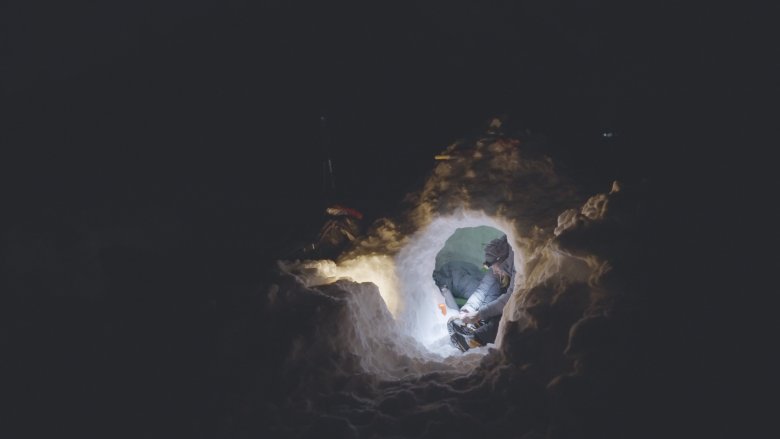
I had imagined that spending a night in the snow would be an ordeal full of pain and suffering, but it was surprisingly warm and cosy. I only woke up once in the night – and that was because of Magdalena's snoring. The first indication of how cold the night must have been comes the next morning when I go to pull on my boots, which I had cleverly left outside, and find them frozen solid.
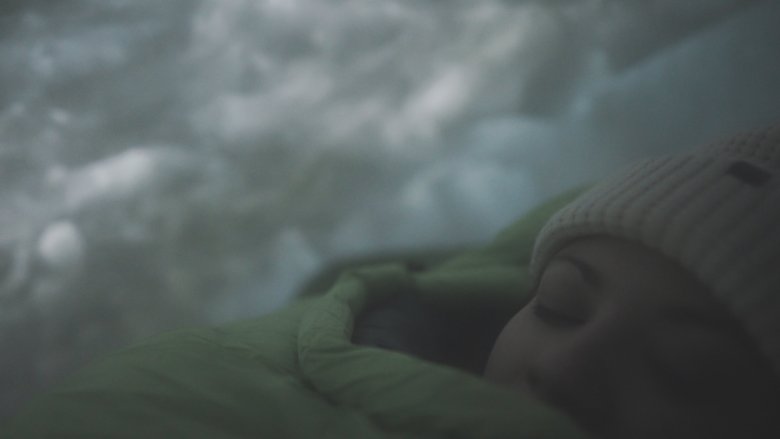
Would I, I wonder, have enjoyed my night in the snow as much if I hadn't spent time with Gerhard and Josef. After all, pushing your limits and is a process you have to do step by step. As different as each experience has been, they have all taught me one thing: there's no need to be afraid of the cold.
So what's next? Ice climbing? A cruise in the Antarctic? Hiking barefoot in the snow? I am sure there are lots more ways to embrace the cold, but right now I think I have earned myself a nice hot-water bottle.










